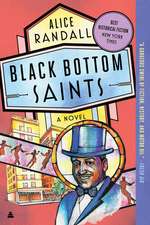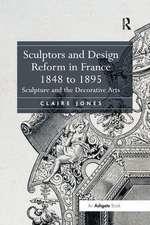Fragonard and the Fantasy Figure: Painting the Imagination
Autor Melissa Percivalen Limba Engleză Paperback – 13 sep 2017
Preț: 303.31 lei
Preț vechi: 343.48 lei
-12% Nou
Puncte Express: 455
Preț estimativ în valută:
58.04€ • 60.75$ • 48.31£
58.04€ • 60.75$ • 48.31£
Carte tipărită la comandă
Livrare economică 31 martie-14 aprilie
Preluare comenzi: 021 569.72.76
Specificații
ISBN-13: 9781138117365
ISBN-10: 1138117366
Pagini: 304
Dimensiuni: 156 x 234 x 20 mm
Greutate: 0.64 kg
Ediția:1
Editura: Taylor & Francis
Colecția Routledge
Locul publicării:Oxford, United Kingdom
ISBN-10: 1138117366
Pagini: 304
Dimensiuni: 156 x 234 x 20 mm
Greutate: 0.64 kg
Ediția:1
Editura: Taylor & Francis
Colecția Routledge
Locul publicării:Oxford, United Kingdom
Cuprins
Contents: Introduction; Fact and fantasy: demystifying Fragonard's fantasy figures; The fantasy figure in European painting; Fragonard, 'pasticheur inspiré'; Departures from resemblance; Fictional identities; Fantaisie and caprice; Conclusion; Bibliography; Index.
Notă biografică
Melissa Percival is Senior Lecturer at the University of Exeter, and an expert in eighteenth-century French studies. She has published widely on theories of physiognomy and facial expression.
Recenzii
'In this smartly written, thoroughly researched work, Fragonard and the Fantasy Figure, Melissa Percival explodes the myth that Fragonard’s fantasy figures are dazzling but impenetrable images; she offers instead a wide range of interpretive perspectives that provides the ground for a renewed appreciation of these works. In a book that is a model of scholarly clarity, Percival has made a valuable contribution to Fragonard studies.' Julie-Anne Plax, University of Arizona, USA
'Melissa Percival has written the first monograph devoted to this group of paintings... Her book offers a spirited and wide-ranging examination of these universally admired pictures; it is cross-cultural and interdisciplinary in its references, scope and discussion; and it aspires to present an expansive, socio-cultural reinterpretation of the fantasy portraits, here considered emblematic of the eighteenth-century imagination.' The Burlington Magazine
'... a conscientious and thoughtful piece of scholarship, which makes a valuable contribution to Fragonard studies.' French Studies
'... convincingly argues that Fragonard’s famous set of paintings was situated within a tradition of portraits, ranging from Dutch tronies, Italian teste capriciosi, English fancy pictures, to Greuze’s highly affective but anonymous girls.' Oxford Art Journal
'Like the drawing, Percival’s study provides new information that adds to our appreciation of Fragonard’s interpretive puzzles set up by the fantasy figures-portraits or non-portraits.' H-France
'Melissa Percival has written the first monograph devoted to this group of paintings... Her book offers a spirited and wide-ranging examination of these universally admired pictures; it is cross-cultural and interdisciplinary in its references, scope and discussion; and it aspires to present an expansive, socio-cultural reinterpretation of the fantasy portraits, here considered emblematic of the eighteenth-century imagination.' The Burlington Magazine
'... a conscientious and thoughtful piece of scholarship, which makes a valuable contribution to Fragonard studies.' French Studies
'... convincingly argues that Fragonard’s famous set of paintings was situated within a tradition of portraits, ranging from Dutch tronies, Italian teste capriciosi, English fancy pictures, to Greuze’s highly affective but anonymous girls.' Oxford Art Journal
'Like the drawing, Percival’s study provides new information that adds to our appreciation of Fragonard’s interpretive puzzles set up by the fantasy figures-portraits or non-portraits.' H-France
Descriere
A fresh interpretation of Fragonard's "figures de fantaisie," Fragonard and the Fantasy Figure: Painting the Imagination reconnects Fragonard's paintings with a neglected tradition of fantasy figures in European art, and situates them within the cultural and aesthetic contexts of eighteenth-century France.




























